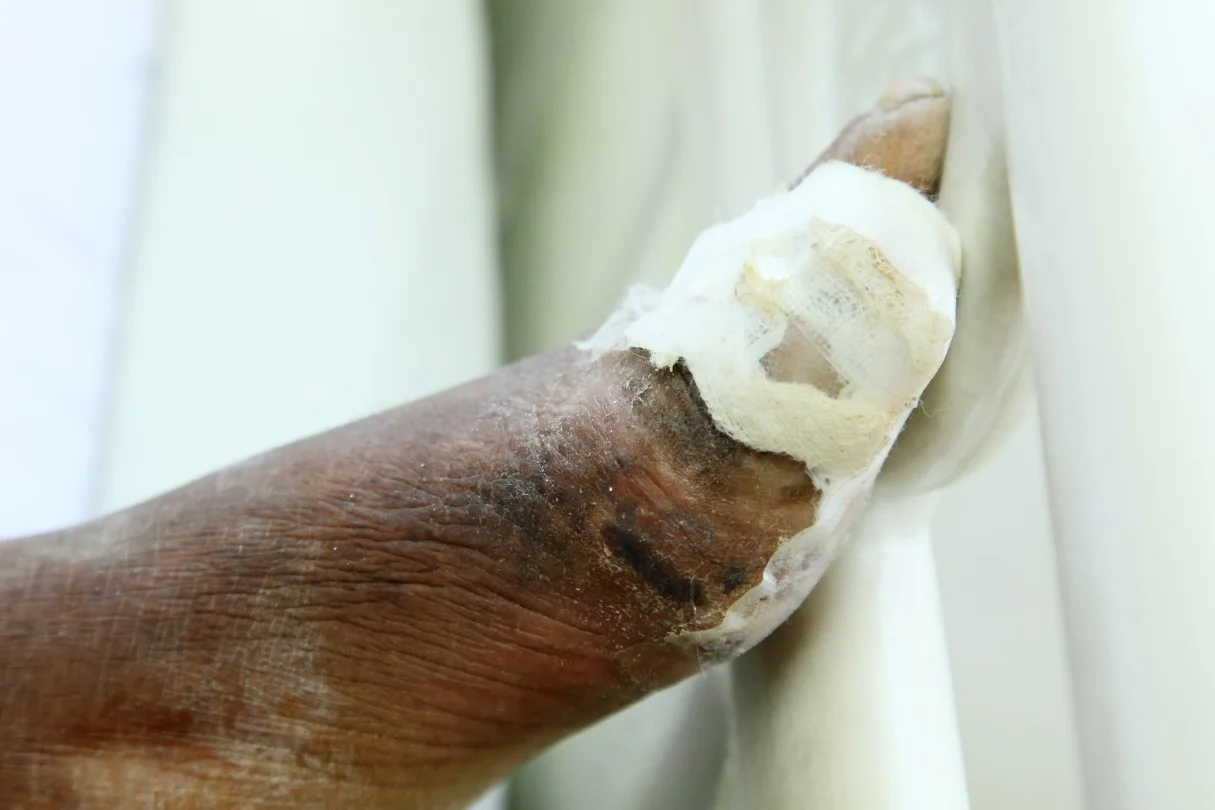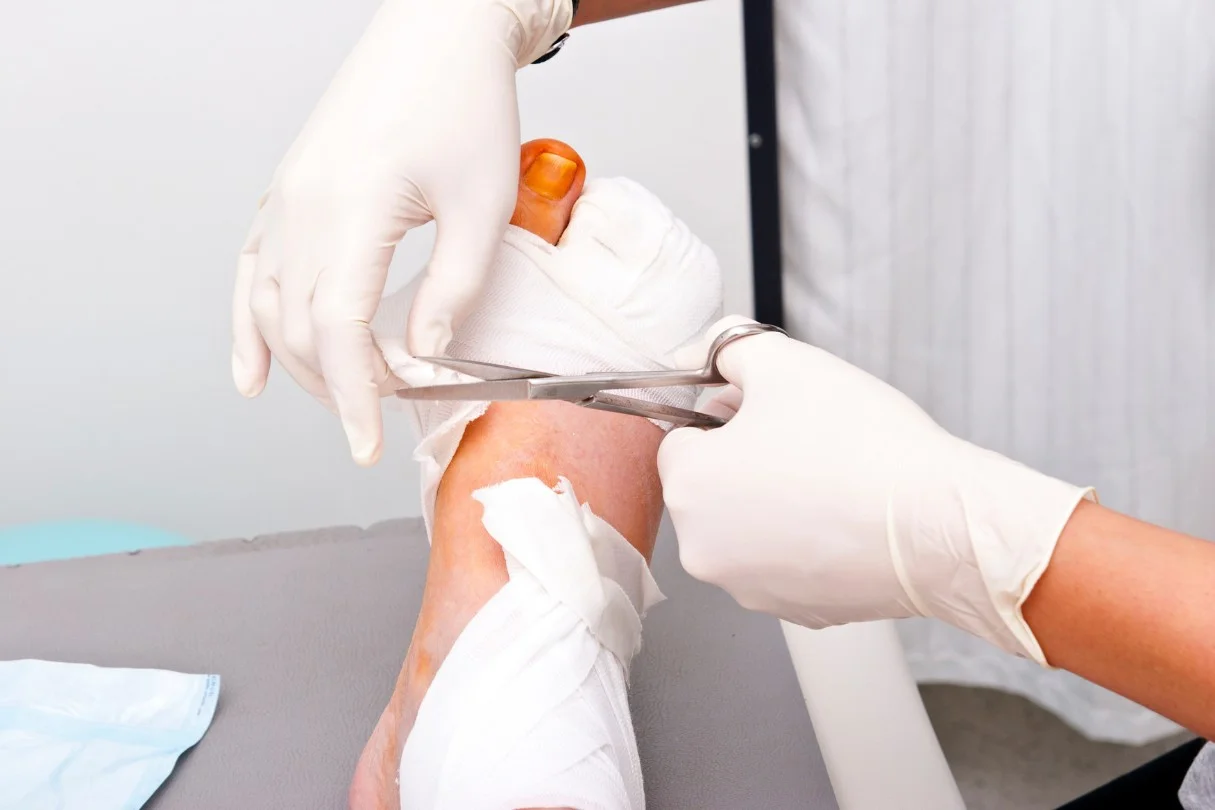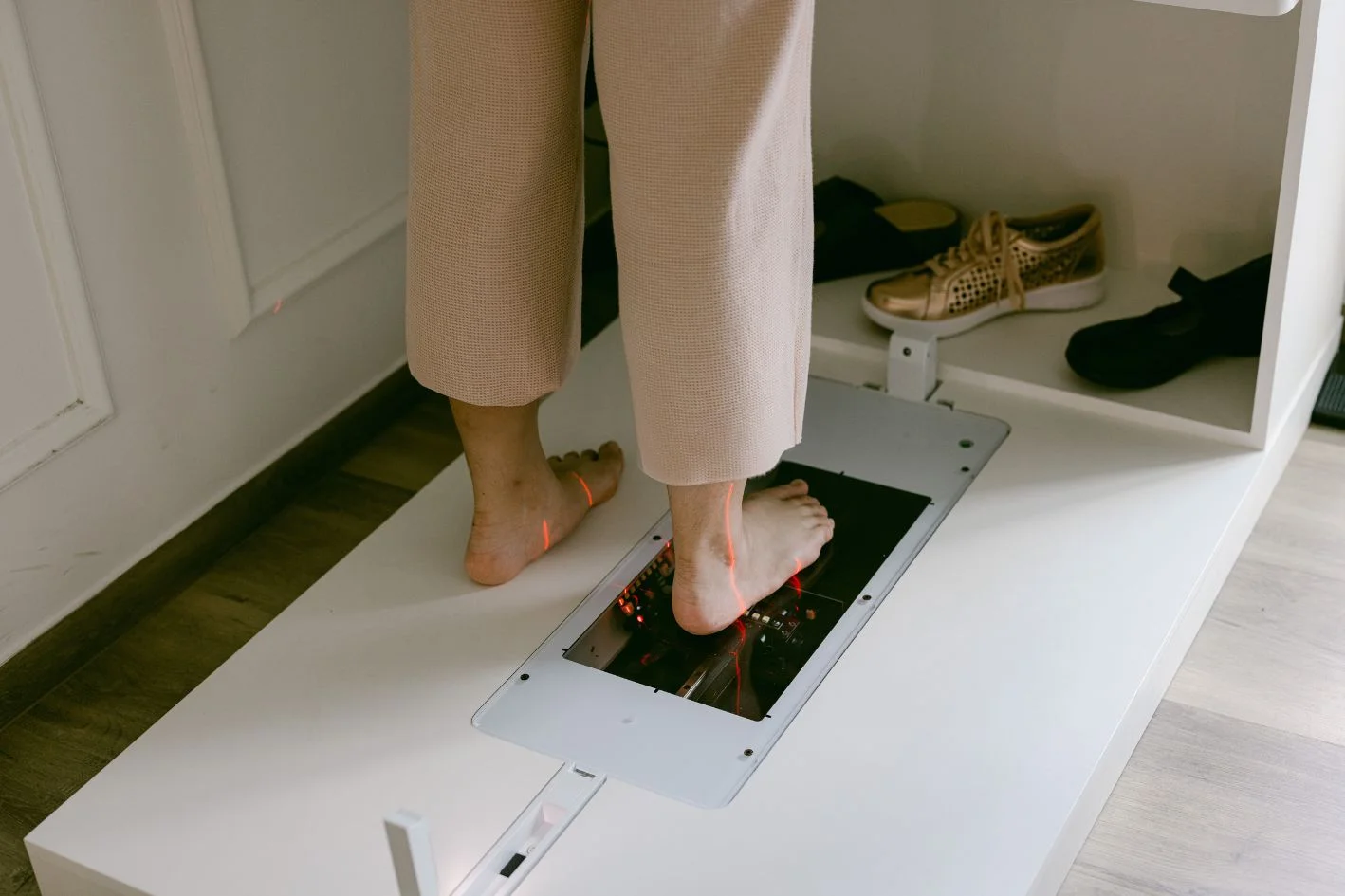People with diabetes are at an elevated risk of gangrene. The latter is a serious condition where body tissue dies due to a lack of blood supply.
This risk is significantly increased due to the impact of diabetes on blood circulation and nerve function, which makes it critical for diabetic individuals to be vigilant in monitoring and managing their diabetic foot. Unfortunately, patients with diabetic neuropathy may not notice when they get injured, which often leads to infections.
In this article, we will discuss the relationship between diabetes and gangrene, including how to diagnose and manage the latter.
What are the types of gangrene?
Gangrene affects extremities such as toes, fingers, and limbs. However, it may also affect internal organs, muscles or genital areas. It does not only affect diabetic patients, but they tend to be more prone to this condition.
Here are the most common types of gangrene that occur in the lower limbs:
Dry gangrene
Dry gangrene occurs when blood flow to a specific part of the body is interrupted due to poor circulation. The lesion typically appears dry, shrivelled, and discoloured (from brown to black). Although dry gangrene progresses slowly, it causes severe complications when proper treatment is not timely.
Wet gangrene
Wet gangrene is characterized by swelling, blistering, and a wet appearance. It usually follows an infection and is more common in people with diabetes due to their compromised immune response. In other words, it is a dying tissue that is infected. Wet gangrene spreads rapidly and can be fatal if not treated urgently.
Gas gangrene
Gas gangrene is rare, and it is caused by a group of bacteria known as Clostridium species. These bacteria produce toxins and gas that precipitate tissue death. The skin over the affected area is usually heavily discoloured (grey, black, and bluish) and swollen with a bubbly texture. It accompanies a strong odour and can be fatal if left untreated.

Risk factors and symptoms of gangrene in diabetic patients
According to research, diabetes significantly increases the risk of gangrene due to the following diabetic foot complications: [1]
Peripheral Artery Disease (PAD)
Diabetic individuals are prone to PAD. This condition occurs when atherosclerosis causes plaque buildup in the arteries, which restricts blood flow to the extremities. This poor circulation is a critical factor in the development of gangrene.
Diabetic neuropathy
Nerve damage that results from high blood sugar levels can cause a loss of sensation in the feet, which makes it difficult to notice injuries or infections that could precipitate gangrene.
Compromised immune system
Chronically elevated glucose levels weaken the immune response.
The symptoms of gangrene vary based on the type but here are some common ones: [1]
- Discoloration of the skin (from red to black).
- Severe pain is followed by numbness and burning as the tissue begins to die.
- Swelling, blisters, and pus discharge (mostly in wet gangrene).
- A foul-smelling odour that originates from the infected area.
How to diagnose and manage gangrene
Early diagnosis is critical to manage gangrene. Medical professionals typically use a combination of physical examinations, blood tests, and imaging studies (e.g., X-rays, CT scans, MRIs) to evaluate the condition. In most cases, surgery will be required to remove the source of the infection and to restore blood flow to the lower limbs.
Treatment options depend on the severity and type of gangrene but generally include:
Debridement
Surgical removal of dead tissue to prevent the spread of infection. In severe cases, this may involve the amputation of the affected limb. Time is of essence when managing gangrene, earlier intervention increases the chance of saving the limb and foot.
Angioplasty
Angioplasty, or “ballooning” procedure is often necessary to help restore bloodflow to the affected leg and stopping further tissue death. It also helps to improve the delivery of antibiotics to the infected area so that infection can be controlled.
Antibiotics
Antibiotics are the cornerstone of gangrene as they prevent the spread of the infection. Unfortunately, antibiotics are not effective in tissues that are already necrosed (i.e., died).
Hyperbaric oxygen therapy
Hyperbaric oxygen therapy is an adjunct modality that places the patient in a high-pressure oxygen chamber, which can increase oxygen delivery to the tissues. The principle is to increase the oxygen saturation in the tissue and allow wounds to recover.
The table below summarizes the types of gangrene and their respective treatments:
| Type of gangrene | Characteristics | Treatment |
| Dry | Dry, shriveled, and discolored skin. | Debridement and possible amputation. |
| Wet | Swollen, blistered skin, and pus discharge. | Debridement, antibiotics, and hyperbaric therapy. |
| Gas | Bubbly skin, rapid spread, and gas in tissues. | Immediate surgery and antibiotics. |
How to prevent gangrene in diabetic patients?
The prevention of gangrene should be the goal of every diabetic patient.
Here are some practical steps that you can follow:
Regular foot inspections – Diabetic patients should inspect their feet daily for any signs of injury, discoloration, or infection. This is very important for those with neuropathy who may not feel pain. At the minimum, see a podiatrist for a diabetic foot screening annually to evaluate your foot health.
Blood sugar control – Keep your blood sugar levels within the target range to lower your risk of diabetic foot complications (e.g., PAD, neuropathy).
Proper footwear – Wear well-fitted shoes to prevent foot injuries that might go unnoticed and cause infections. Adopt a habit of wearing slippers (covering the toes) at home to keep your feet protected.
Smoking cessation – Smoking exacerbates blood vessel damage, which increases the risk of PAD and gangrene. Therefore, you must quit smoking as soon as possible.
Healthy diet and exercise – Maintain a healthy weight, manage your cholesterol levels, and engage in physical activity to improve blood circulation and reduce your risk of PAD and gangrene.
Takeaway message
Gangrene is a serious complication for people with diabetes that could lead to limb amputation. To reduce the risk of this condition, careful monitoring, early diagnosis, and appropriate treatment must be incorporated. Diabetic patients must also be proactive and watch out for signs of gangrene.
If you suspect yourself or your family members are suffering from symptoms of gangrene, seek help today by contacting us. At Straits Podiatry, we aim to provide timely access and intervention for diabetic foot infections and complications. We collaborate with various specialists and will provide a holistic, tailored treatment plan for you.
References
- https://www.ncbi.nlm.nih.gov/books/NBK560552/
- https://www.ncbi.nlm.nih.gov/books/NBK549821/








